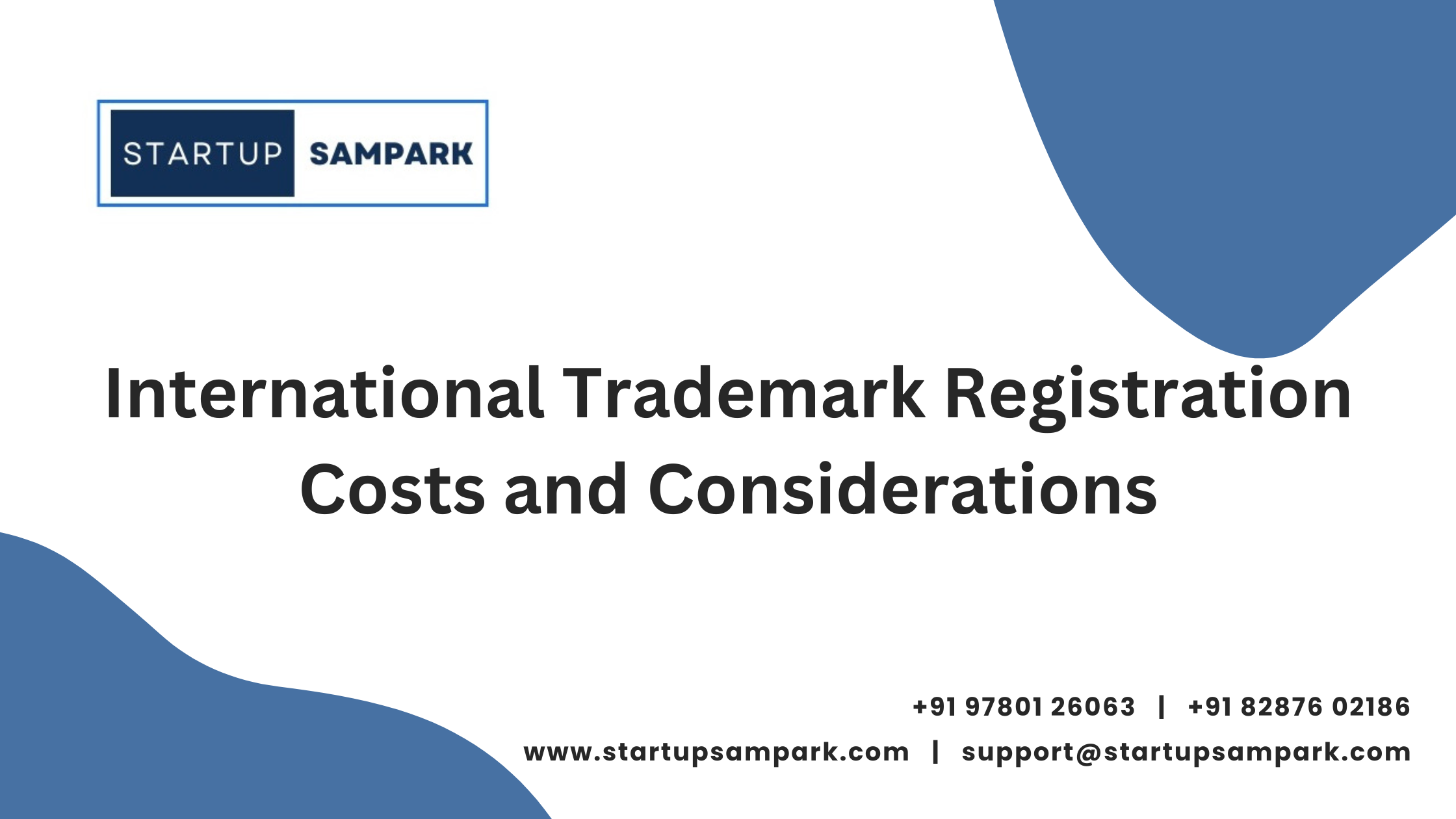International Trademark Registration Costs and Considerations
International trademark registration involves securing trademark protection in multiple countries, and this process can be both complex and costly. When expanding a brand internationally, businesses need to carefully consider the costs and strategies involved to ensure comprehensive protection across different jurisdictions. Here’s an overview of the costs and key considerations associated with international trademark registration.
The primary method for international trademark registration is through the Madrid System, managed by the World Intellectual Property Organization (WIPO). The Madrid System allows applicants to file a single application and designate multiple member countries where they seek protection. This system simplifies the process compared to filing separate applications in each country, but it still involves several fees and considerations.
The costs associated with the Madrid System include a basic fee, fees for each designated country, and possible additional fees depending on the number of classes of goods or services covered. The basic fee for an international application is around 653 Swiss francs (CHF) if the mark is in black and white, and 903 CHF if it’s in color. Beyond this, individual countries charge their own fees for extending protection, which can vary significantly. For instance, the fee for designating the European Union as a whole is 1,311 CHF, while designating Japan costs 543 CHF. If the application covers more than three classes of goods or services, additional class fees are also required.
Apart from the initial registration fees, businesses should be aware of the ongoing costs associated with maintaining international trademarks. Each country may have its own renewal fees, which are typically due every 10 years, although this can vary by jurisdiction. For instance, renewing a trademark in the European Union costs approximately €850 for one class, with additional fees for extra classes.
Legal fees are another important consideration in international trademark registration. While the Madrid System simplifies the process, navigating the specific legal requirements of each designated country can be challenging. Engaging a trademark attorney with expertise in international law is often necessary to ensure that the application meets the varying standards and regulations of each country. Legal fees can vary depending on the complexity of the application and the number of countries involved, often adding several thousand dollars to the overall cost.
In addition to costs, businesses must consider the specific challenges of international trademark registration. Each country has its own trademark laws and practices, which can affect the registration process. For example, some countries require that a trademark be used within a certain period after registration, or it may be subject to cancellation. Others may have stricter requirements for distinctiveness, meaning a mark that is easily registered in one country could face obstacles in another.
Language barriers and translation costs are also important factors. Some jurisdictions require that the trademark application and any accompanying documents be submitted in the local language, which can add to the expense and complexity of the process. Inaccurate translations can lead to misunderstandings or even rejections, so it’s essential to work with qualified translators who understand legal terminology.
Another key consideration is the potential for opposition or refusal in different countries. Even after a trademark is filed internationally, it may face opposition from local businesses or be refused by trademark offices if it conflicts with existing marks or does not meet local standards. Preparing for and responding to these challenges can incur additional legal costs and delay the registration process.
Businesses should also be aware of the enforcement costs associated with international trademarks. Securing a trademark in multiple countries is only the first step; maintaining and defending it against infringement requires ongoing vigilance and resources. Enforcement actions, such as sending cease-and-desist letters or pursuing litigation in foreign courts, can be expensive and complex, often requiring the assistance of local legal experts.
Lastly, the strategic selection of countries for trademark registration is crucial. Businesses need to carefully choose where to seek protection based on factors like market presence, potential for expansion, and the likelihood of counterfeiting. It may not be necessary or cost-effective to register a trademark in every possible country. Instead, focusing on key markets where the brand is active or plans to expand can help manage costs while providing essential protection.
In summary, international trademark registration involves a range of costs and strategic considerations, including fees under the Madrid System, legal expenses, renewal costs, and the challenges of navigating different legal systems. While the process can be expensive and complex, careful planning and the right legal guidance can help businesses effectively protect their trademarks across multiple jurisdictions.
Trademark
-
 MSME Registration₹1,180.00
MSME Registration₹1,180.00 -
 GST Registration₹2,360.00
GST Registration₹2,360.00 -
 Trademark Registration₹7,450.00
Trademark Registration₹7,450.00

















Post Comment